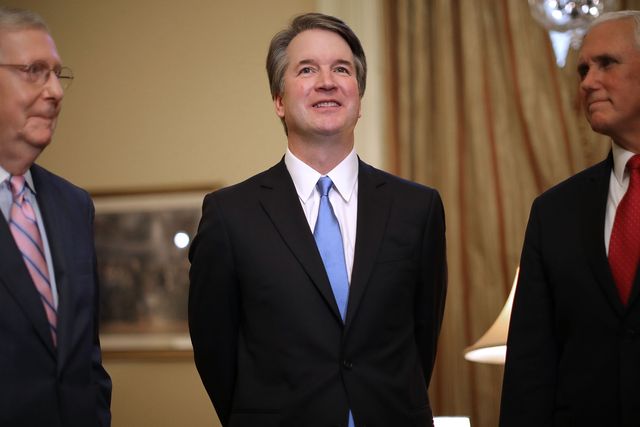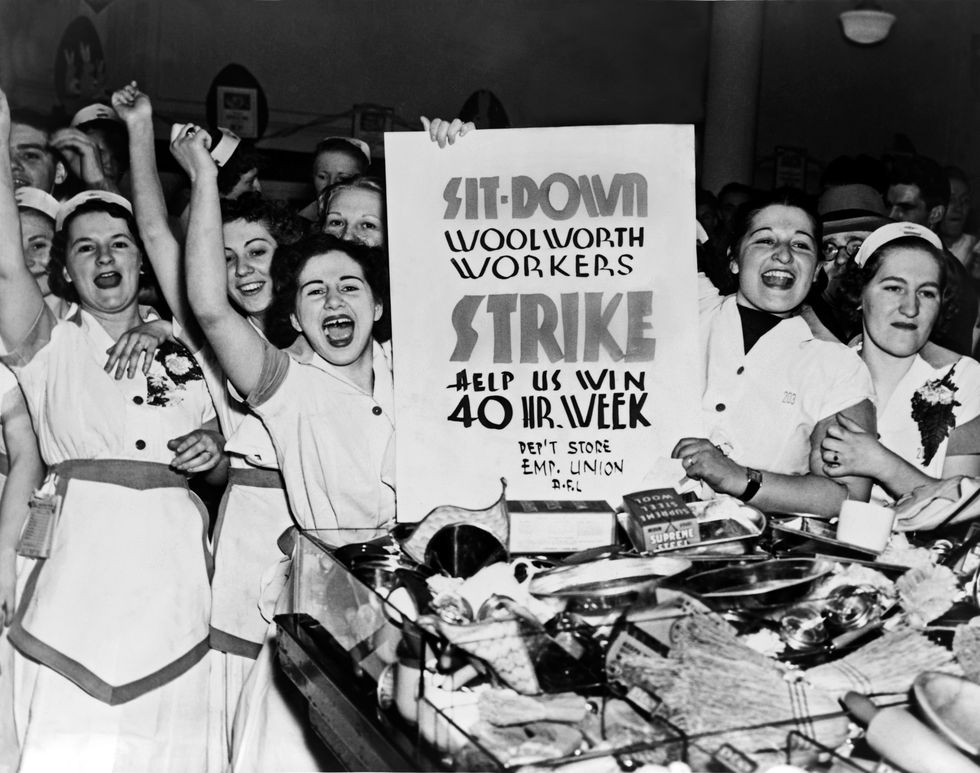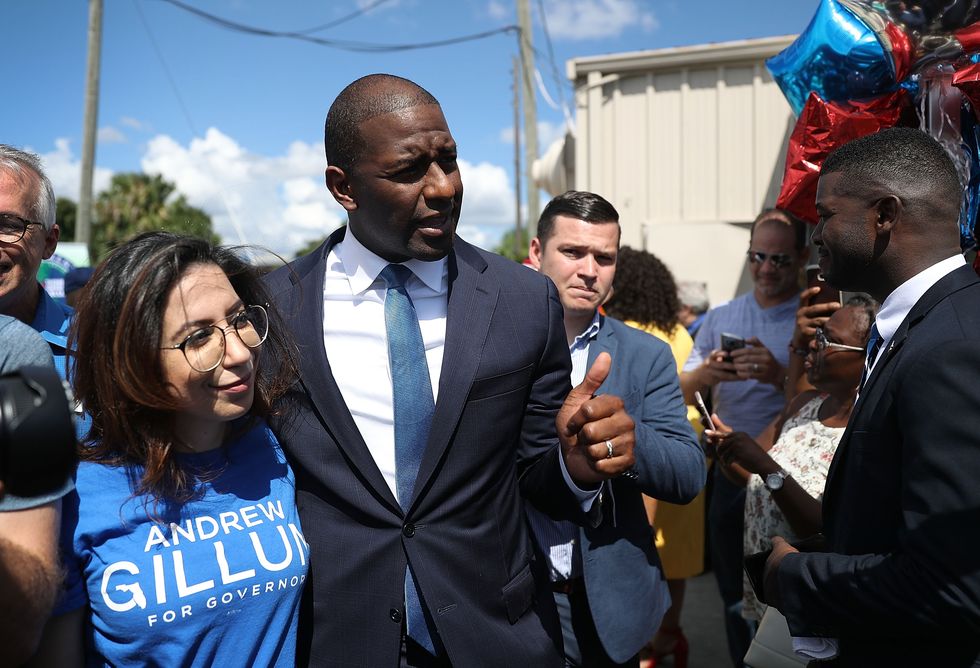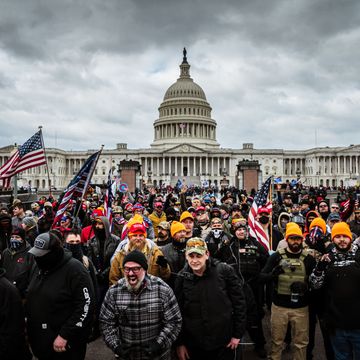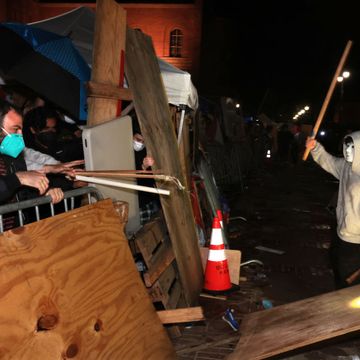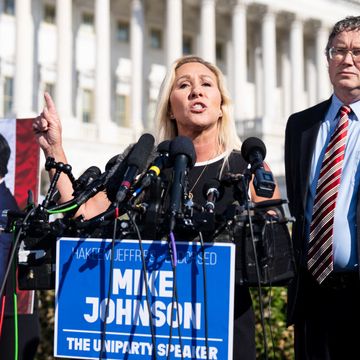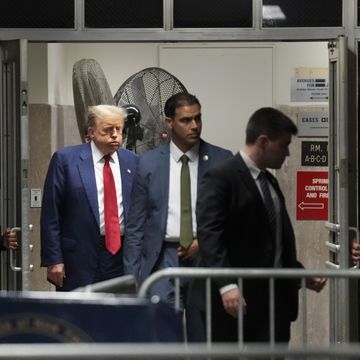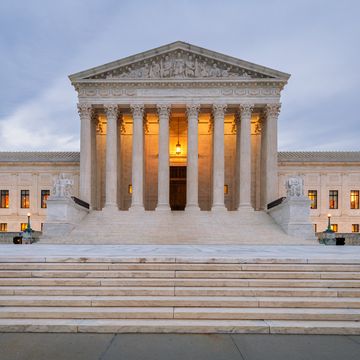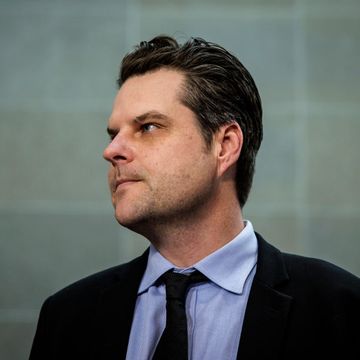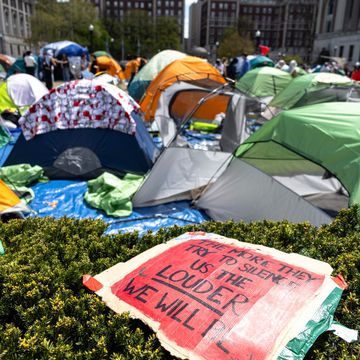(Optional Musical Accompaniment To This Post)
Monday is Labor Day and, on Tuesday, the Senate Judiciary Committee will begin hearings into the nomination and inevitable confirmation of Brett Kavanaugh to a lifetime position on the Supreme Court of the United States. Much of the attention— rightly—will be drawn to Kavanaugh's dreadful history on reproductive rights, as well as to whatever is stashed away in the 100,000 documents that the administration* is keeping buried regarding what Kavanaugh did during the torture years under President George W. Bush. But it shouldn't be overlooked that his record on labor issues is every bit as retrograde as any other part of his Federalist Society bona fides. From Mother Jones:
Kavanaugh joined two other Republican-appointed judges in a unanimous 2012 ruling in favor of the Trump Organization, after company executives asked the NLRB to throw out the results of a union election at Trump Plaza, arguing that support from politicians had introduced bias. As a July Bloomberg article points out, in 2015 Kavanaugh sided with the management of Sheldon Adelson’s Venetian Casino Resort in a similar case, authoring a majority opinion upholding the casino’s First Amendment right to summon police to issue citations to union protesters trespassing on company property
One of Kavanaugh’s most high-profile dissents of NLRB authority was in a 2014 case against SeaWorld’s Florida theme park involving events depicted in the documentary Blackfish. When a killer-whale trainer died during a live show in 2010—the second death at the location—the Occupational Safety and Health Administration (OSHA) launched an investigation that found the theme park had willfully endangered its employees. The DC Circuit upheld the decision of a Department of Labor administrative judge, who ruled the theme park had violated OSHA guidelines and imposed a $7,000 fine. In his dissent, Kavanaugh said OSHA was uncharacteristically trying to “stretch its general authority.” He said the SeaWorld employees’ position was no different than any other occupation where workers consent to put themselves in danger, comparing their work to tiger taming and football.
“When should we as a society paternalistically decide that the participants in these sports and entertainment activities must be protected from themselves—that the risk of significant physical injury is simply too great even for eager and willing participants?” he asked, calling the “physical risk…among the greatest forms of personal achievement for many who take part in these activities.”
Labor Day is a good time to think about the courts because it was in the courts that organized labor was most effectively crushed in this country, and it was in the courts that the way was cleared for it to flourish, and, it appears that the courts are being set up to crush it again.
From 1897 until approximately 1937—the end date is a matter of some dispute—the court's relation to labor was defined by the horrendous decision in Lochner v. New York. Citing "freedom of contract" as a constitutional right, the decision was used through the decade to strike down all manner of regulations touching on business large and small. (Lochner itself was about working conditions in bakeries.) Unions, of course, came along with the deal. In Adair v. United States, the Court struck down a law that would have made it illegal for a company to fire employees for trying to organize.
Make no mistake. There is a strong strain of modern conservatism that is openly nostalgic for the Lochner Era; Rand Paul made the case a part of his campaign for president in 2016. Mark Joseph Stern, writing in Slate, argues that the recent anti-labor Janus decision is Lochner revisited. Stern quotes Justice Samuel Alito's opinion in Janus:
“...into the 20th century, every individual employee had the ‘liberty of contract’ to ‘sell his labor upon such terms as he deem[ed] proper.’” To support this proposition, he cites 1908’s Adair v. United States—a defining decision of the Lochner era. Both Lochner and Adair rested on the premise that the Constitution protects an individual’s right to sell his labor at any cost. This doctrine trammeled minimum wage and maximum hour rules, as well as laws safeguarding workers’ right to unionize. Janus restores this premise in a slightly altered form, replacing “liberty of contract” with “associational freedoms.” The upshot is the same: Laws designed to benefit labor’s ability to act collectively are inherently suspect.
Right now, the president* is a guy who stiffed contractors, and fought unionization in every one of his properties until his opponents ran out of money for legal fees. The congressional majorities are resolutely anti-union and many state legislatures are no better.
But there is stirring out in the country. Pro-union candidates are winning primaries, the latest being Andrew Gillum in Florida. In Wisconsin, both Democratic gubernatorial candidate Tony Evers and his running mate, Mandela Barnes, are running specifically against rolling back the anti-union measures enacted by incumbent Scott Walker, the goggle-eyed homunculus hired by Koch Industries to manage this particular midwest subsidiary. In Seattle, as the Seattle Times reports, unions are preparing to celebrate the centennial of the great 1919 general strike in that city with a renewed sense of purpose.
Mark Spry, a member of International Union of Operating Engineers Local 302 since 1997, said last week he was on strike because wages aren’t keeping up with the region’s booming economy.
“We’ve been needing to catch up for quite a while,” he said, standing beside a job site where he runs the man lift, the orange elevators that take workers up an under-construction building. “They just came back with the same type of an offer as other years, and it’s just time not to let that happen again.”
Late last week, equipment was moving again at several job sites where the union reached agreements with individual contractors, but as of Friday morning, the majority of Seattle cranes were still “put to bed” and no broader agreement had been reached.
Sooner or later, though, all of this energy is going to run up against a federal court system, and a Supreme Court, that is going to be marbled all the way through with judges who've come up on the same assembly-line as Brett Kavanaugh. In the history of this country, there has not been an expansion of the middle-class without a strong, vibrant union presence. That doesn't change just because factories move to Mexico, or because of robots. There simply is no other way for wages to rise generally other than having the people receiving those wages bargain collectively for them. That Labor Day is still a holiday at all, I guess, is something for which we can give thanks. The attack on labor itself begins again on Tuesday.
Respond to this post on the Esquire Politics Facebook page here.

Charles P Pierce is the author of four books, most recently Idiot America, and has been a working journalist since 1976. He lives near Boston and has three children.
